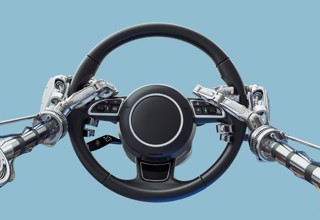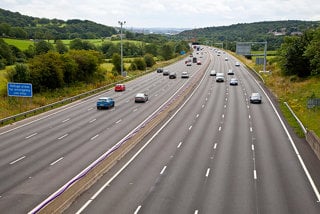Behavioural training for drivers is paramount for the shift to more automated cars, a new study has found.
The research, by the University of Nottingham and the RAC Foundation, studied two groups of experienced drivers in a driving simulator to observe their behaviour while behind the wheel of a car with level 3 automation.
The study found that drivers who received behavioural training were more measured in their behaviour and better understood the car’s capabilities and limitations.
Emily Shaw, lead author and member of the University of Nottingham’s Human Factors Research Group which carried out the study, said: “This research demonstrates that the complex and changing nature of the role of the driver in an increasingly automated car should not be underestimated.
“It’s clear that behavioural training has a positive effect on the driver’s behaviour and their understanding of the car’s capabilities.
“To date, driver training for automated vehicles is no different to that provided for manual vehicles.
“The assumption being that prior manual vehicle training and experience, alongside instruction from the dealer and/or the vehicle’s operating manual, is more than sufficient.
“However, the introduction of intermediate levels of automation into vehicles means that the driving task is shared between the driver and system, fundamentally changing the role of the driver.”
The drivers in the behavioural training group received training under the CHAT procedure – CHeck, Assess, Takeover – while the other group trained by reading an operating manual.
Key findings in the behavourial training group included its drivers:
- were significantly more likely to notice a potential hazard during the transition from automated to manual driving (in this case a tailgating car), with 90% of drivers noticing the car in this group, compared to 24% of the operating manual group
- made more measured decisions in lane change manoeuvre shortly after taking back manual contrl
- spent more time preparing (eg. acquiring knowledge of the road environment through mirror checks) before physically making the lane change
- made more mirror checks in the run up to and during the lane change manoeuvre
- checked their mirrors more frequently, even while the car was driving autonomously.
During a period of automated driving, participants in both groups could decide whether to engage in a non-driving task, such as looking at their phone, tablet, laptop or reading materials, or nothing at all.
When notified by the vehicle to take back control and transition from automated driving, the group who were trained with only an operating manual took almost 10 times longer to pay full attention to driving, continuing glances at their non-driving task for an average of 11.2 seconds, compared with 1.8 seconds in the behavioural group.
The behavioural group was also markedly faster at making their first glance at the road when notified to take over – on average 7.3 seconds, in comparison to 21 seconds in the other group.
Cars on the road at present are equipped with levels 1 and 2 of vehicle automation, meaning several simultaneous activities which assist steering or acceleration are partially automated – this includes, lane centring, adaptive cruise control, blind spot warning and automatic emergency braking.
At level 3, automation capability extends to the monitoring task, allowing drivers to switch their attention towards non-driving related tasks.
However, the human driver remains responsible for the vehicle’s actions and must be ready to intervene in the event of a system failure or where the boundary of the automated system’s operational design has been reached.
David Large, senior research fellow with the Human Factors Research Group at the University of Nottingham, added: “While future vehicles will deliver more automation than ever before, these vehicles are likely to remain visually the same as the current cars we are used to, and therefore may not present an obvious step-change in development.
“Drivers, as well as those responsible for delivering driver training– and indeed, those who manufacture and sell these vehicles– may therefore be forgiven for assuming that no new skills are required to use them.
“However, this research clearly shows there is a lot of work to be done around preparing drivers for this next stage of automation.
“Without this, drivers are more likely to form inaccurate or inappropriate mental models of automation capability and competence, which can lead to misuse or incorrect use of driving automation.”






















Login to comment
Comments
No comments have been made yet.